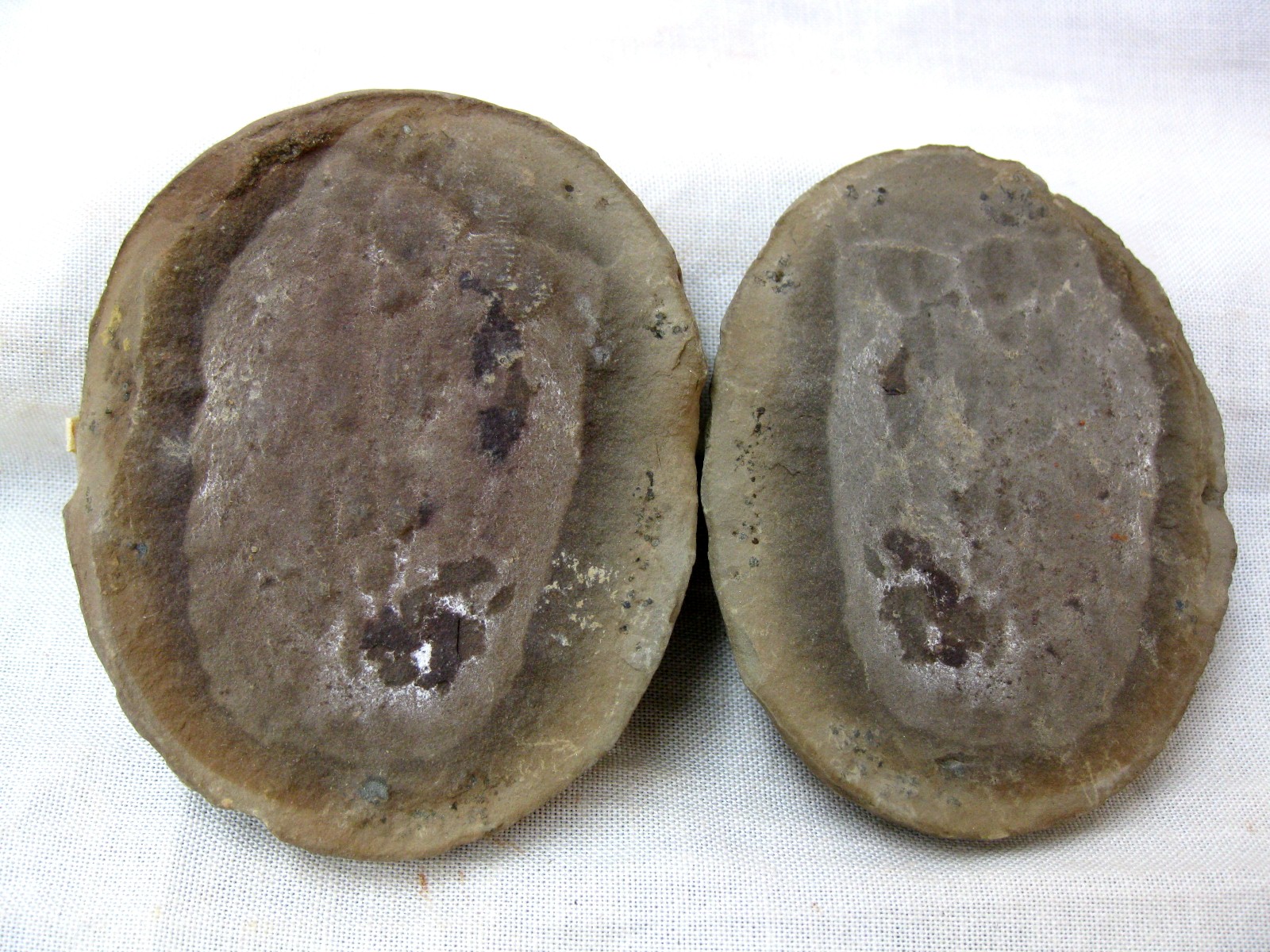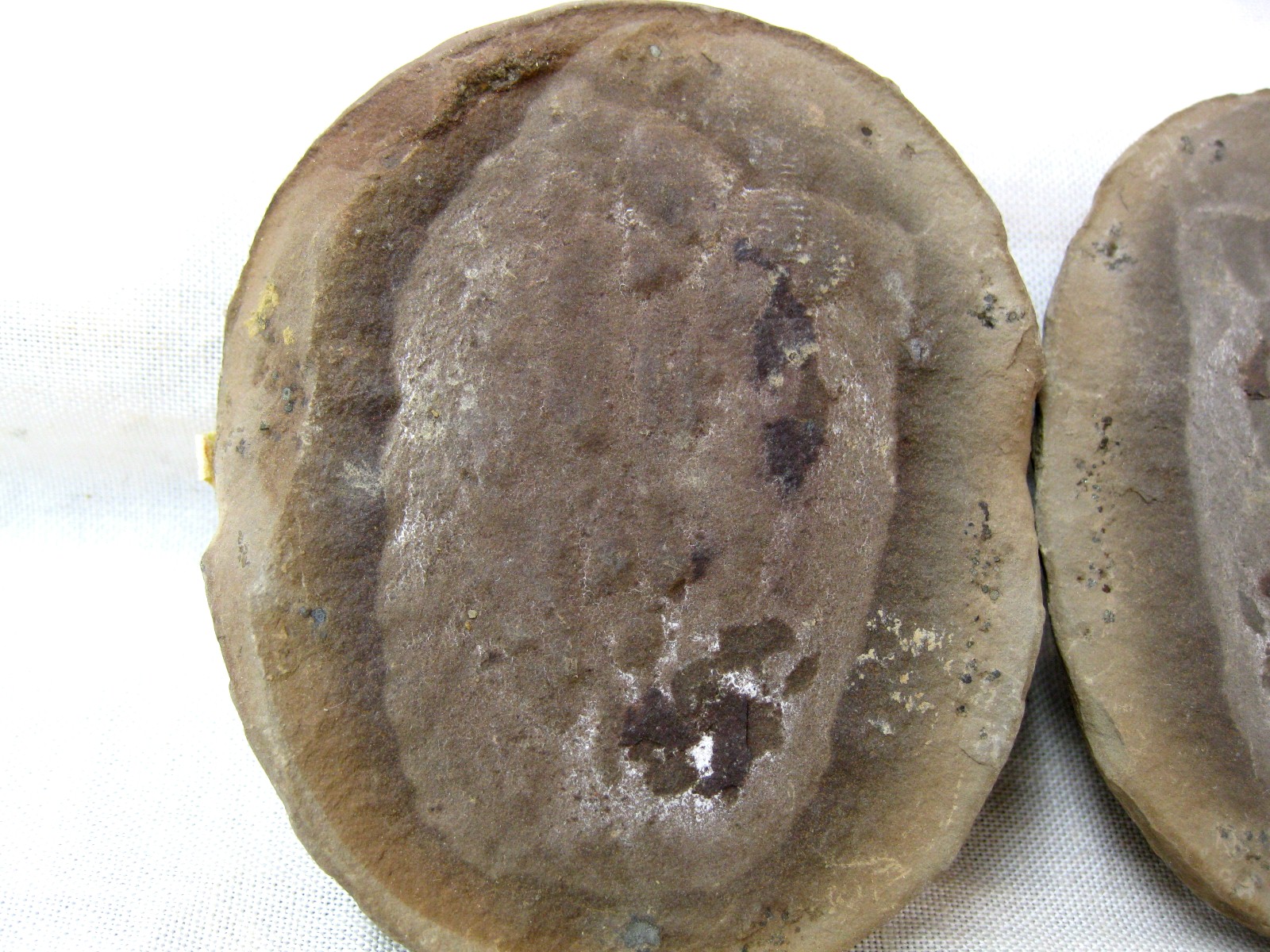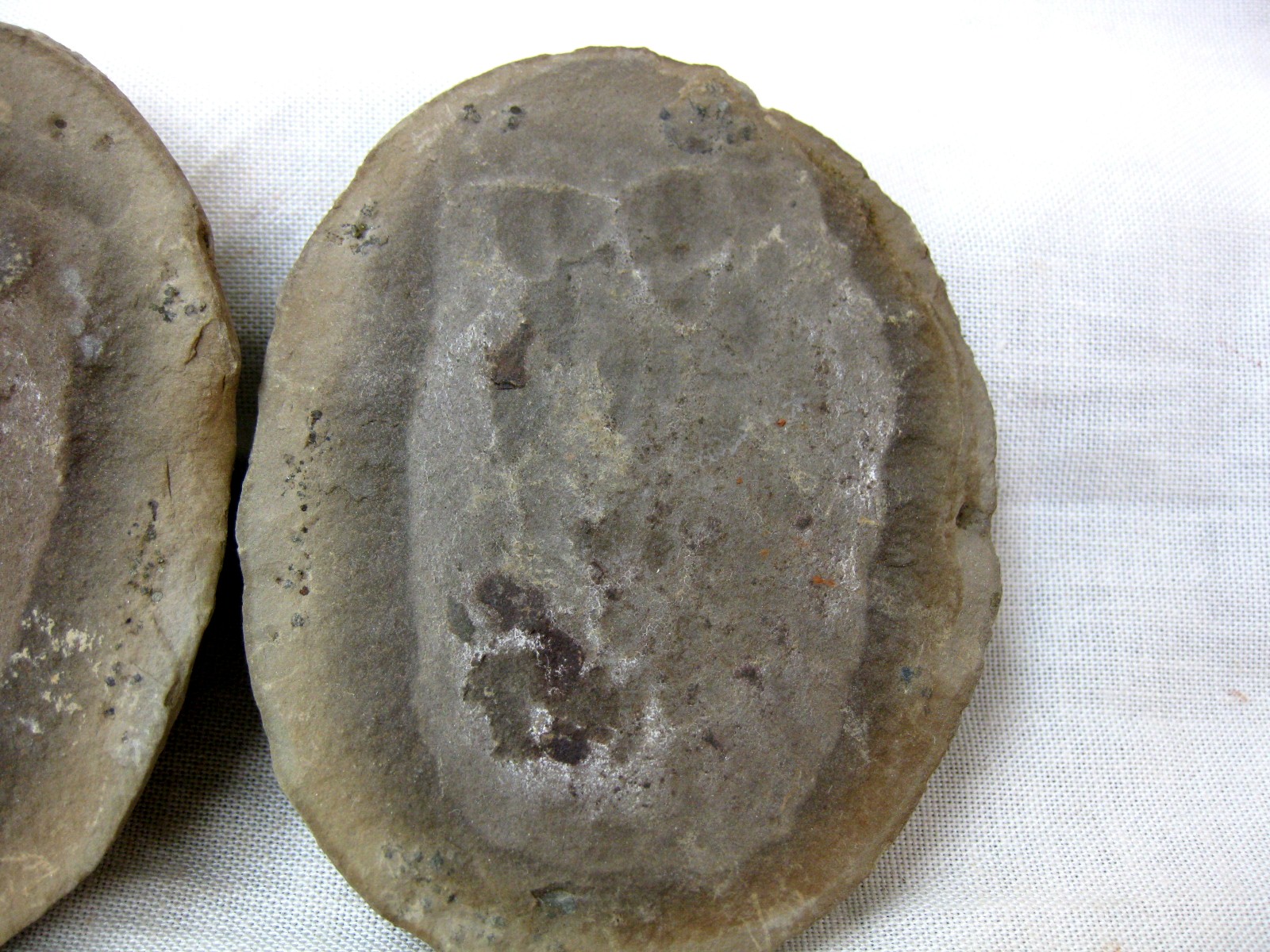Description
- Mazon Creek Jellyfish Nodule
- Essexella asherae
- Pennsylvanian Age
- Carbondale Formation
- Coal City, Illinois
- Specimen measures approx. 2 5/8″ long
The Mazon Creek fossil beds are a conservation lagerstätte found near Morris, in Grundy County, Illinois. The fossils are preserved in ironstone concretions, formed approximately 300 million years ago in the mid-Pennsylvanian epoch of the Carboniferous period. These concretions frequently preserve both hard and soft tissues of animal and plant materials, as well as many soft-bodied organisms that do not normally fossilize. The quality, quantity and diversity of fossils in the area, known since the mid-nineteenth century, make the Mazon Creek lagerstätte important to paleontologists, in attempting to reconstruct the paleoecology of the sites. The Mazon Creek fossils are found in the Upper Carboniferous Francis Creek Shale; the type locality is the Mazon River (or Mazon Creek), a tributary of the Illinois River near Morris, Grundy County, Illinois. The 25 to 30 meters of shale were formed approximately 300 million years ago, during the Pennsylvanian period. The fossiliferous concretions are usually found within the thickest deposits of Francis Creek. The concretions occur in localized deposits within the silty to sandy mudstones, in the lower four metres of the formation. The paleoecosystem is believed to be a large river delta system, deposited by at least one major river system flowing from the northeast. The sediments are believed to derive from the Appalachian orogeny events. The delta had a tropical climate, a result of the area being within 10° north latitude of the equator during the Pennsylvanian. The remains of plants and animals were rapidly buried by the sediment deposited in the deltaic system. Bacterial decomposition of the remains produced carbon dioxide that combined with dissolved iron from the groundwater. This process formed siderite in the sediments surrounding the remains, forming detailed casts of their structure. Lithification of the sediments formed protective nodules of ironstone around the now fossilized remains. This mode of preservation is known as authigenic mineralisation.







